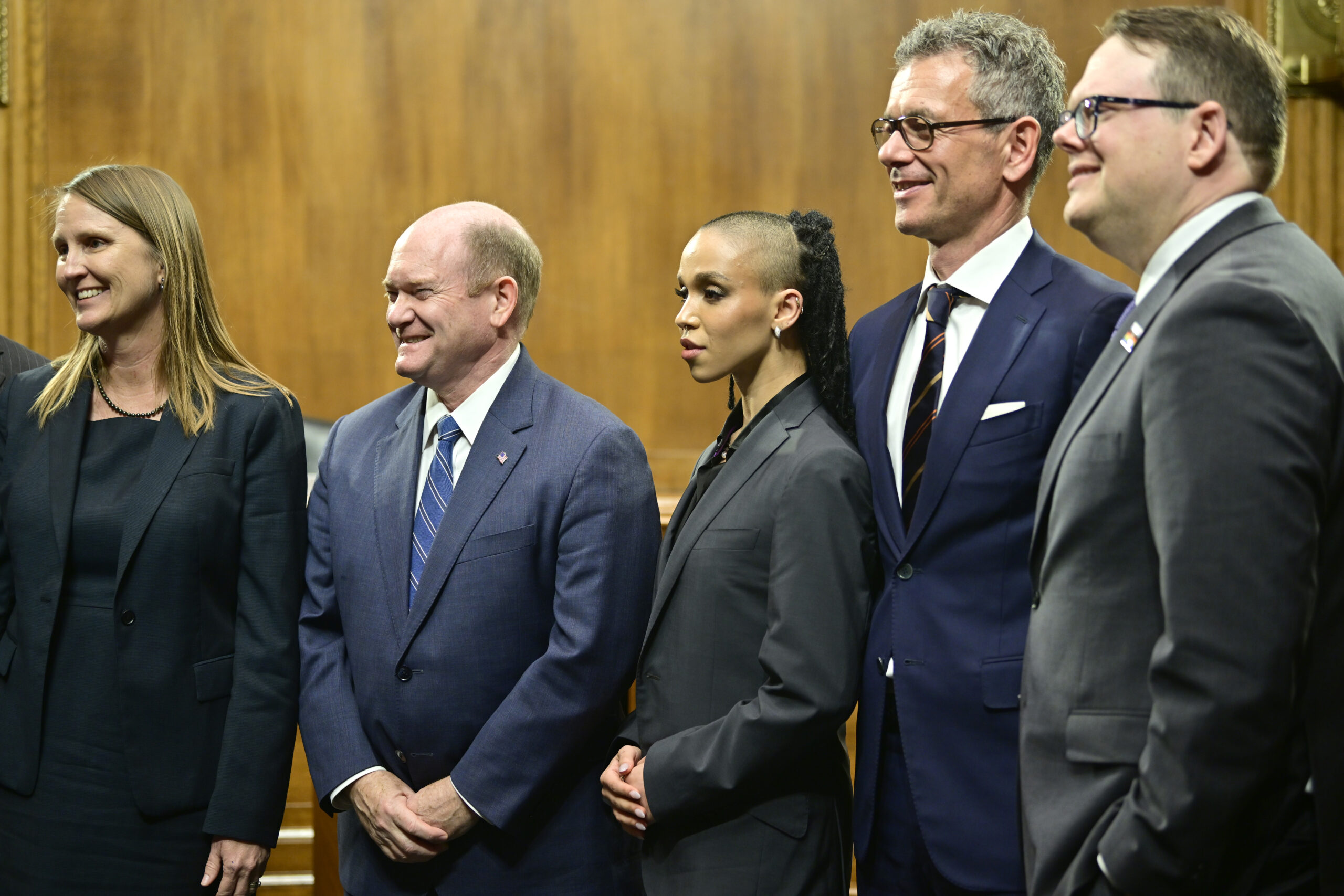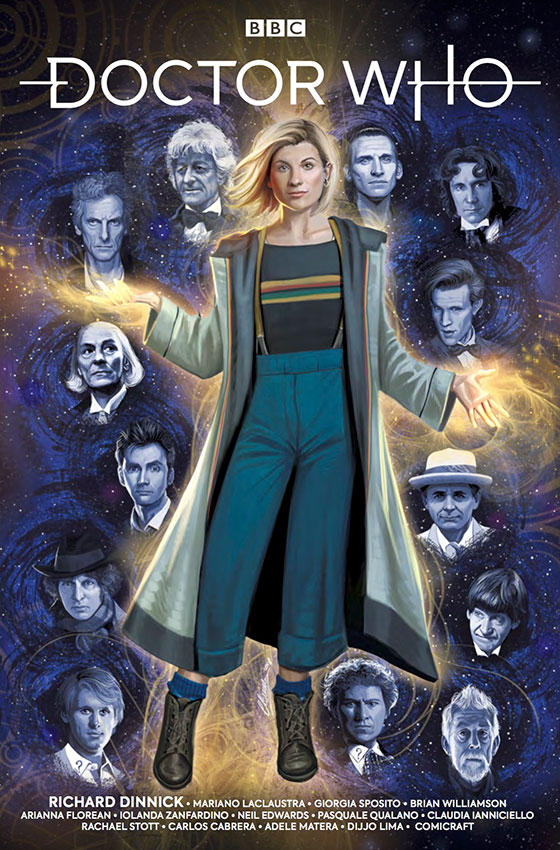
A Newcomer’s Guide To… Doctor Who
Welcome to the first installment of the “Newcomer’s Guide”! The idea with this article is to tackle a long-standing or complicated series, especially those with a long history or a convoluted canon. Because some of these franchises have been around for a long time, some for decades, it can be a daunting challenge for someone to come in cold. The goal with the “Newcomer’s Guide” is to break down the best way to get into a long-standing franchise, including comics, television shows, or video games.
Recently, I was asked by a fellow Crusader about the best way for a new viewer to get into Doctor Who. That is a complicated question with several possible answers, and it’s not something that a simple response can cover. Doctor Who is a long-standing staple of British science fiction that goes all the way to 1963, making it older than even shows like classic Star Trek.
The legacy of Doctor Who is enormous and has only grown over time. The title character of The Doctor, a time-travelling alien from the planet Gallifrey, has been portrayed by thirteen main actors, not counting other incarnations played by other actors. The Whoniverse (as it is often called by Who fans) is vast and sprawling, including a large roster of villains and monsters that the Doctor regularly opposes. Moreover, it is a show involving time travel, which means that the past changes constantly and the canon itself is continually revised. “Time can be rewritten” is one of many popular catchphrases when it comes to the Doctor, and for good reason.
The Basics of Doctor Who: A Madman With a Box
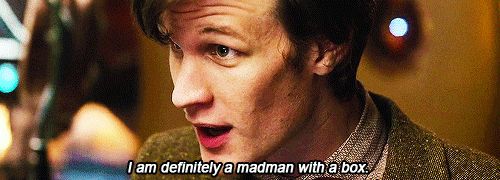
The Doctor is a member of the Time Lords, an alien that hails from the planet Gallifrey. He (or she, depending on the incarnation) travels through space and time in a time machine called the TARDIS, usually alongside Companions that he invites to travel with him. Due to a malfunction, the TARDIS is typically stuck in the form of a police box. Because of Time Lord super-science, the TARDIS is bigger on the inside than it is on the outside. The Doctor loves showing it off.
The Companion is typically a young human woman in most versions of the show, and she is the viewpoint identification character that we see the world through. There are exceptions to this format, depending on the Doctor and what the story needs at the time. Also, there have been revisions to continuity in recent years that challenge many of the show’s inherent assumptions.
The Doctor is a rebel by the standards of his own people, someone who chooses to live apart from the Time Lords because he doesn’t agree with their ways. He is fascinated by humans and cares for them, though some incarnations may seem irritated with them. He is a highly intelligent being even by the standards of the Time Lords, always filled with curiosity about the universe and a desire to make the universe a better place. He is generally a non-violent character, preferring to use his vast intellect and wisdom to solve problems rather than resorting to force. At the same time, the Doctor is often driven to make decisions that involve violence and death. He has done terrible things in his long life, and he is haunted by guilt over his dark past.
The role of the Companion is to balance the Doctor and give the audience a character to connect with. The Doctor is brilliant, eccentric, sometimes arrogant, and his head is always looking at the big picture of the universe. The Companion exists to remind the Doctor of the human scale, to center the Doctor, and to keep him from giving in to his darker impulses. A good Companion should bring the best in the Doctor and reaffirm the Doctor’s faith in the humanity he cherishes and seeks to protect. Sometimes that relationship can be romantic, but not always—in fact, the early Doctors never had romantic attachments at all. The 1995 TV movie featuring the Eighth Doctor began to change that, and the 2005 “New Who” relaunch of Doctor Who would shift the entire paradigm.
The Doctor also deals with many recurring enemies as he/she travels through time and space. The Daleks, an alien species driven to the extermination of all non-Dalek life, are the natural enemy of the Doctor and are his most hated foes. The Cybermen are the precursor to the Borg—a collective hive mind that assimilates organic life in the pursuit of perfection. The Master is the Doctor’s rival and intellectual equal, an evil Time Lord dedicated to subjugating all life. The Weeping Angels are quantum-locked life forms that turn to stone on sight—but if you blink, you’re dead. The Doctor has a long roster of colorful villains that would be the envy of any superhero.
The Doctor’s past is extensive because the Doctor is virtually immortal. She currently claims to be 2,000 years old, but that may not necessarily be true. (Rule One: The Doctor lies.) As a Time Lord, the Doctor ages slower than the average human. Some incarnations of the Doctor have lived for centuries; the Eleventh Doctor lived for 800 years on the planet Trenzalore before his body wore out.
However, even this is not the end for the Doctor. The Doctor has the power to regenerate on a cellular level, restoring his body once it reaches the verge of death. However, this process changes the Doctor’s appearance entirely, to the point that each incarnation of the Doctor is a completely different person. The Doctor retains his memories of his past versions, but he or she will look and sometimes even act differently than other incarnations. Of course, the Doctor’s memory is not that reliable, given that he is at least 2,000 years old and he’s probably forgotten more than entire human lifetimes can retain. It used to be that the Doctor only had twelve regenerations, but that was extended by an unknown amount in “Time of the Doctor”.
The idea behind regeneration, of course, is to renew the show periodically once an actor leaves the role of the Doctor. When William Hartnell left the show, he passed the torch to Patrick Troughton, the Second Doctor, a tradition that continues to this day. The regeneration process has gotten more elaborate and destructive over time, especially in the “New Who” era of the show. Doctors come and go, and Companions come and go as well. The only constants in Doctor Who are the TARDIS and the role of the Doctor. But there is a code that every Doctor lives by: “never be cruel or cowardly; never give up, never give in.”
Fixed Points in Time
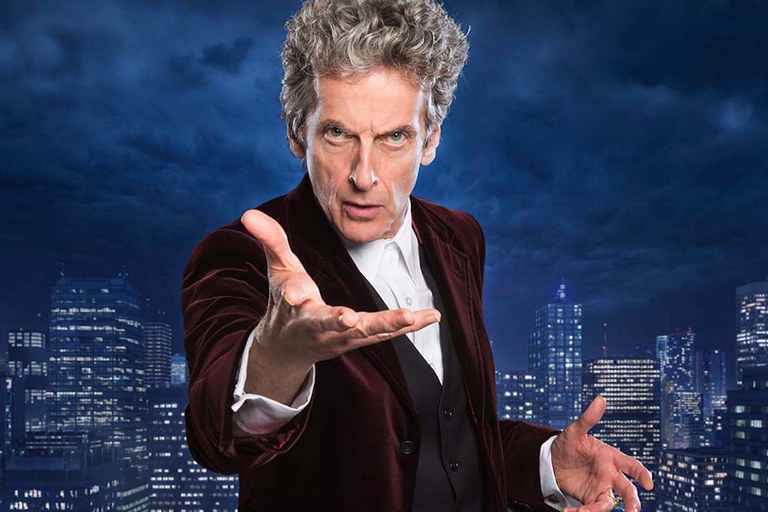
Because the show is so uniquely structured, there isn’t one single best way to start watching Doctor Who. Some episodes are perfectly understandable by themselves and you don’t need to know any of the larger Who mythos to follow the story. Many of them follow a simple structure—the Doctor lands in a particular situation, figures out the situation and defeats the monster of the episode, then leaves in the TARDIS. Others do need somewhat more knowledge, especially any stories dealing with the Time Lords, or major enemies of the Doctor, such as the Daleks, the Cybermen, or the Master.
All that said, there are better places to start than others. I’ll discuss some of the possible starting points…
- S1E1: “Rose” (2005): One of the best places to start Doctor Who is with the beginning of the New Who era, under showrunner Russell T. Davies. This episode introduces the Ninth Doctor (portrayed by Christopher Eccleston), newly regenerated after the end of the Time War between the Time Lords and the Daleks. At this time, the Doctor is believed to be the last of the Time Lords, traveling alone. He encounters a young shopgirl named Rose Tyler (played by Billie Piper), who becomes the main Companion for the first two seasons. “Rose” explains most of the basics, and by the end of Season 1, all the elements of Doctor Who should be clear to the viewer. Davies is considered by many to be one of the greatest showrunners in the history of the show, mainly because of his run on the Ninth and Tenth Doctors.
- S5E1: “The Eleventh Hour” (2010): After the departure of Davies, writer Steven Moffat (best known for classic Davies-era episodes like “Blink” and “The Girl in the Fireplace”) took over as showrunner. The Doctor also regenerated again, this time into Matt Smith, then the youngest actor ever to play the Doctor. “The Eleventh Hour” introduces popular Companions Amy Pond (played by Karen Gillan) and Rory Williams (played by Arthur Darvill). This is generally considered one of the best post-regeneration episodes, and it’s easily one of the most accessible to new viewers. Moreover, Season 5 is often cited as one of the best seasons in all of New Who, and there are very few substandard episodes in Season 5.
- “The Unearthly Child” (1963): If you want a challenge, you could start from the very beginning and go with the First Doctor, William Hartnell. “The Unearthly Child” is a good episode by the standards of the early 1960’s, and the show will explain what you need to know. However, I don’t recommend starting here because the First Doctor’s era doesn’t give a complete picture of what the show is. The Doctor’s character hadn’t been broken in fully, and it isn’t until Patrick Troughton as the Second Doctor that we see the Doctor we know today. Hartnell’s Doctor was much more of an anti-heroic character at times, not the more heroic character we see in modern incarnations.
In theory, you could start with the beginning of any Doctor’s run if there’s an incarnation that interests you. The idea behind regeneration is for the show to refresh and move to factory settings, so that the show isn’t bound by the past. In practice, though, that hasn’t always been the case, especially when showrunners have been involved with multiple incarnations of the Doctor. I’ll discuss each of these eras in more depth.
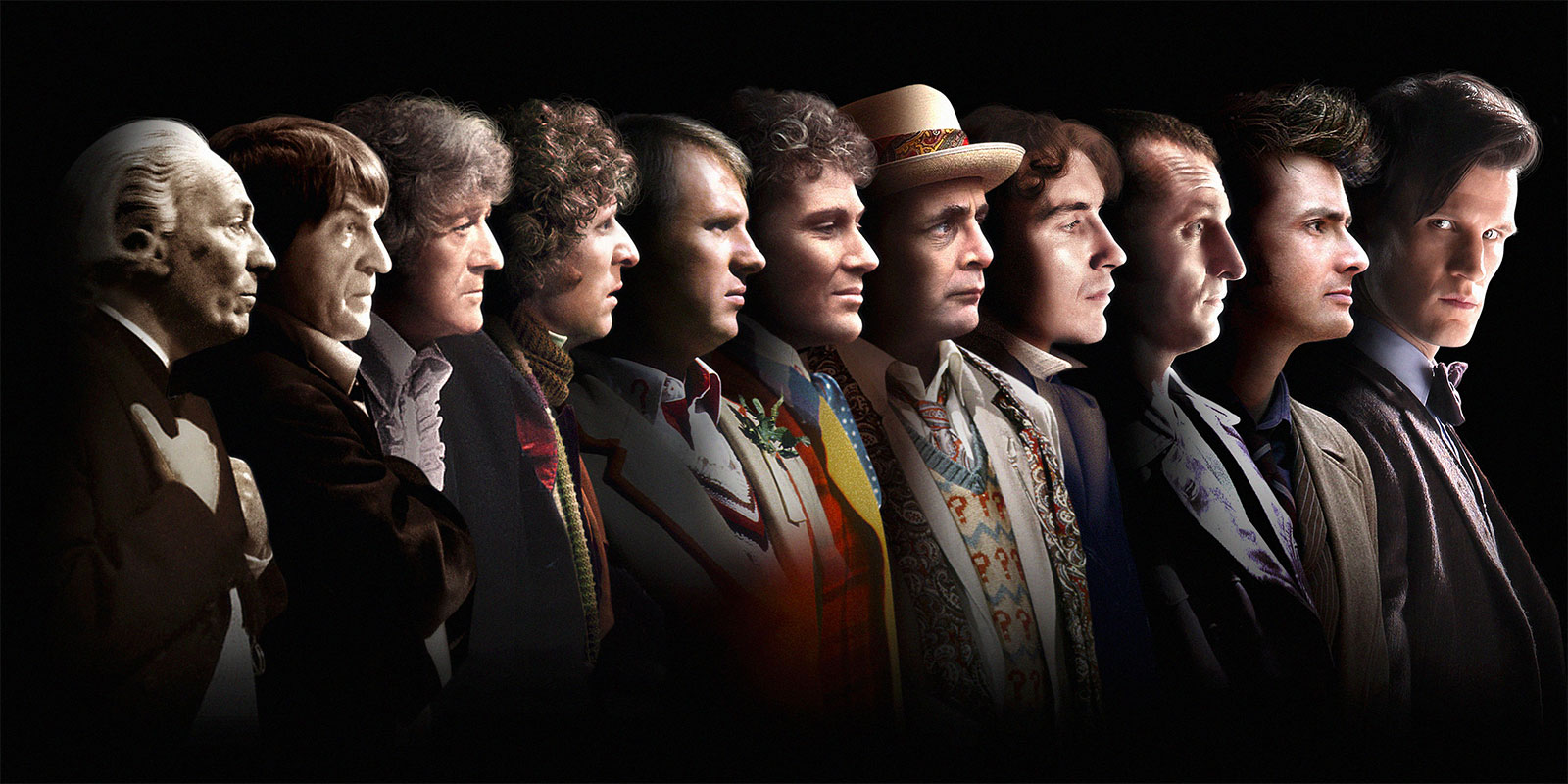
- William Hartnell (1963-1966): A valid starting point if you want to see the Doctor evolve over time. His episodes are available on outlets like Britbox and have been made available on DVD.
- Patrick Troughton (1966-1969): Troughton is considered the “cosmic hobo”; he seems odd and goofy, but this is an act that hides a deep intellect. “Power of the Daleks” is a great starting point if you’re interested in Doctor Who, as it covers the basics while telling a good Dalek story. Troughton also did many classic episodes that are worth seeing, including “Tomb of the Cybermen” and “The Enemy of the World”. Unfortunately, many of Troughton’s episodes were lost, which makes it tricky to go chronologically with his run. Still, many of his episodes have full audio recovered, and these episodes are being remade in animated form.
- Jon Pertwee (1970-1974): The period many Whovians think of when it comes to Classic Who. Stranded on Earth, the Doctor became influenced by James Bond, becoming a scientific advisor to the UNIT organization. This era also introduced the Master, the Doctor’s arch-enemy and rival Time Lord. Pertwee eventually would influence the Twelfth Doctor’s run. While not an ideal starting point, Pertwee had possibly the second greatest run in the Classic era, exceeded only by his immediate successor.
- Tom Baker (1974-1981): This is the only run on Classic Who I might recommend as a good starting point into the series. Baker is considered by many to be the definitive Doctor, and his bohemian style and offbeat charisma contributes to this. Sarah Jane Smith is one of the greatest Companions in the show’s history, and she played best against Baker. Moreover, some of the all-time best classic episodes are Baker episodes, including “Genesis of the Daleks”, “The Talons of Weng-Chiang”, “The Deadly Assassin”, and “Pyramids of Mars”. Much of Baker’s run is currently available on Blu-ray.
- Peter Davison (1982-1984): Peter Davison was the youngest actor to play the Doctor until Matt Smith took the role. His Doctor was generally one of the most compassionate, and he traveled with one of the largest groups of Companions in the TARDIS early on. While his era is often overlooked, his final story, “The Caves of Androzani”, is one of Davison’s best.
- Colin Baker (1984-1986): Not recommended as a starting point. Colin Baker’s run was divisive at the time, due to no fault of Baker’s own. His early episodes left a sour impression due to the writing, and the “technicolor dreamcoat” costume was disliked even by Baker. Still, Colin Baker’s last arc, “The Trial of a Time Lord”, is well regarded, and Baker has found new respect because of his Big Finish audio dramas.
- Sylvester McCoy (1987-1989): The Doctor who ended the Classic era. Regarded as the most manipulative schemer of the Doctors, as well as one of the darkest. His Companion, Ace, is a strong complement to the Seventh Doctor, and some of his stories are excellent. “Remembrance of the Daleks” is one of the great Dalek stories. However, the McCoy run doesn’t begin on a good note, and so I can’t recommend it as a starting point into the series.
- Paul McGann (1996): Paul McGann was a great Doctor in a mediocre TV movie. It is possible to begin with this movie and get the basics of what the show is. However, the movie isn’t reflective of the show’s overall quality. McGann only made two on-screen appearances—his last appearance is in “Night of the Doctor”, a mini-episode made for the 50th anniversary of the series. McGann’s Eighth Doctor is one of the best, though “Night of the Doctor” and the Big Finish audio dramas give a much better idea of what his Doctor was capable of.
- Christopher Eccleston (2005): Perhaps the best entryway into the series. The Ninth Doctor set the tone for New Who and the great Doctors that followed him.
- David Tennant (2005-2010): Regarded by many as the best Doctor since Baker, though this is open for debate. Tennant set the standard for the modern Doctor, offbeat, charismatic, and driven by darkness. His first episode is not the best place to start, as the Tenth Doctor doesn’t even appear until the last fifteen minutes, and the story picks up from Eccleston’s era. Still, Tennant had a long tenure as the Doctor, and many of his episodes are beloved today.
- Matt Smith (2010-2013): Steven Moffat takes over as showrunner with Season 5, and his era was as great as it was plagued by inconsistency. Still, “The Eleventh Hour” sets the tone for Matt Smith’s Doctor perfectly, and Season 5 is considered a high point for the entire series. Smith’s final two specials are also quite good: “Day of the Doctor” is one of the best multi-Doctor episodes, and “Time of the Doctor” is a strong farewell episode to Smith.
- Peter Capaldi (2014-2017): Peter Capaldi is my favorite Doctor, in part because he may be the finest actor ever to play the role. He also has one of the strongest character arcs among the Doctors, as he learns to open his hearts and feel again after suffering deep losses. Unfortunately, some of the individual stories are not as good as they were under Tennant and Smith. Still, Capaldi has some standout episodes, including “Time Heist”, “Heaven Sent”, and “World Enough and Time/The Doctor Falls”. His run ends with “Once Upon a Time”, a crossover with the First Doctor. Still, I wouldn’t recommend beginning with Capaldi, as his run builds upon Moffat’s previous stories with Matt Smith.
- Jodie Whittaker (2018-present): As of this writing, the current Doctor is Jodie Whittaker, who is the first woman to hold the role. There is also a new showrunner—Chris Chibnall, best known for Broadchurch. While it is possible to begin with this era, it’s also an era that is divisive among Whovians. The Season 12 finale, “The Timeless Children”, is particularly controversial because of significant retcons to prior Doctor Who canon. However, if you’re not concerned about continuity, that may not be an issue for you.
The different Doctors sometimes meet from time to time as well. Crossovers are occasional, and usually are treated as special events, but they do happen. “The Three Doctors” feature the meeting of the Hartnell, Troughton, and Pertwee Doctors, though Two and Three are the focus of that story. Other meetings include “The Five Doctors” during the Davison era, a crossover with Troughton in the Colin Baker era, a short meeting between Five and Ten during the Tennant era, and a Christmas special featuring the Twelfth Doctor and the First (played by David Bradley). The most memorable recent crossover was “Day of the Doctor” during the Moffat era, where Matt Smith and David Tennant met a lost incarnation called the War Doctor (played by the late Sir John Hurt).
Whichever entry point you choose, I would recommend starting the series with New Who for several reasons. In the first place, those episodes are easier to find. Not only are these episodes easy to find on DVD and Blu-ray, they are also available for streaming on different platforms. Currently, New Who is available for streaming on HBO Max for subscribers. For the most part, New Who is largely consistent with the previous canon while telling good, accessible stories. Once you have a good grounding into the Whoniverse, it’s easier to look back to Classic Who at a later time.
Classic episodes can also be more difficult to find, depending on the era. Patrick Troughton’s run is still incomplete because the BBC never preserved those classic episodes, although the gaps are being filled through animation. Some classic runs are being gradually re-released on Blu-ray, including the Third through Seventh Doctors, though these collections are still incomplete. Finding Doctor Who on DVD in the US can also be a challenge because each episode is a single DVD set, making buying the series in physical media an expensive proposition. However, Britbox does make Classic Who available for a subscription fee, and this does include most classic episodes aside from some of the new Troughton releases. The Eighth Doctor is a personal favorite of mine, but catching up on McGann is dicier, given that the majority of his run is in Big Finish audio collections.
The New Who episodes are also written with a modern sensibility and an eye for deeper characterization. While Classic Who has some truly great episodes, it was never a show that had a modern show structure or took deep dives into the Doctor’s character like you’ll find in New Who. In addition, many of the older episodes can be quite long and that can be an adjustment if you’re coming into the series cold. Once you have a sense of what the show is, digging into the backlog and exploring the Doctor’s rich history becomes much easier.
“The Moment Has Been Prepared For”
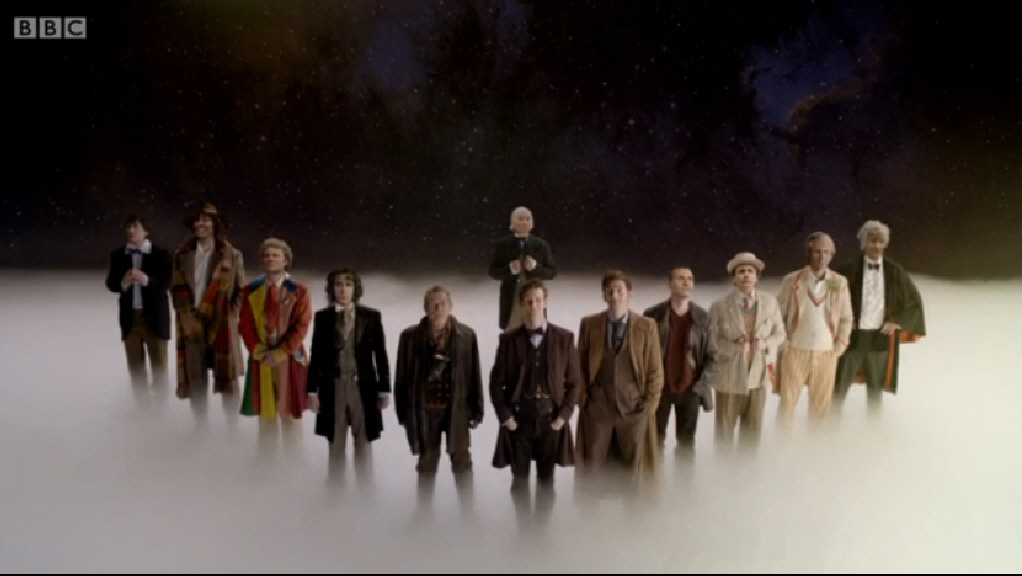
Fortunately, Doctor Who is a show that often reinvents itself, and that plays to the advantage of a newcomer into the series. If you don’t like a Doctor or a Companion, just wait until the next regeneration or the next Companion to board the TARDIS.
The basic structure of the show does not substantially change regardless of who the cast is, and the only characters that are required are the Doctor and the TARDIS. If the stories look too convoluted to get into right now, wait for the Doctor to regenerate and it’ll all start again fresh. Sometimes the timing is important—when and where you break in can make the process easier for you.
There is no single “right” answer, just the one that works for you. If a certain Doctor looks interesting to you, run with it! That said, there are definitely better points to break in than others, and some stories are more accessible than others. The debut of a new showrunner usually tends to be the best opportunity to break into the show, because those stories tend to be geared towards new viewers. Still, there are many perfectly good ways in if you’re curious about the show, and Doctor Who rewards patience and persistence.
In the end, the show is worth all that time and investment. The character of the Doctor is unlike anything in popular culture, especially in science fiction. The Doctor is a hero who prizes intellect, wisdom, and peace above mindless violence, and that’s the kind of hero we could use more of. He is a funny, deep, and tragic figure who is capable of darkness and pain, but also redemption and hope. If that’s your kind of character as well, then Doctor Who is well worth the time to invest into.
Author Profile
- Steve Sellers had been a fan of superheroes ever since Superman: The Movie. But it took the JSA, the Legion of Super-Heroes, Dragonlance, Lord of the Rings, Twilight Zone, and Chris Claremont's legendary run on the X-Men to make him a writer and a longtime fan of comics, fantasy, and science fiction. Steve is the co-creator of WHITE DRUID & MICHAEL NERO and GUARDIANS OF ELAYIM for Omen Comics, and he is also the creator of BLITZ and SHOCKWAVE for Revelation Comics (an imprint of Omen Comics).





